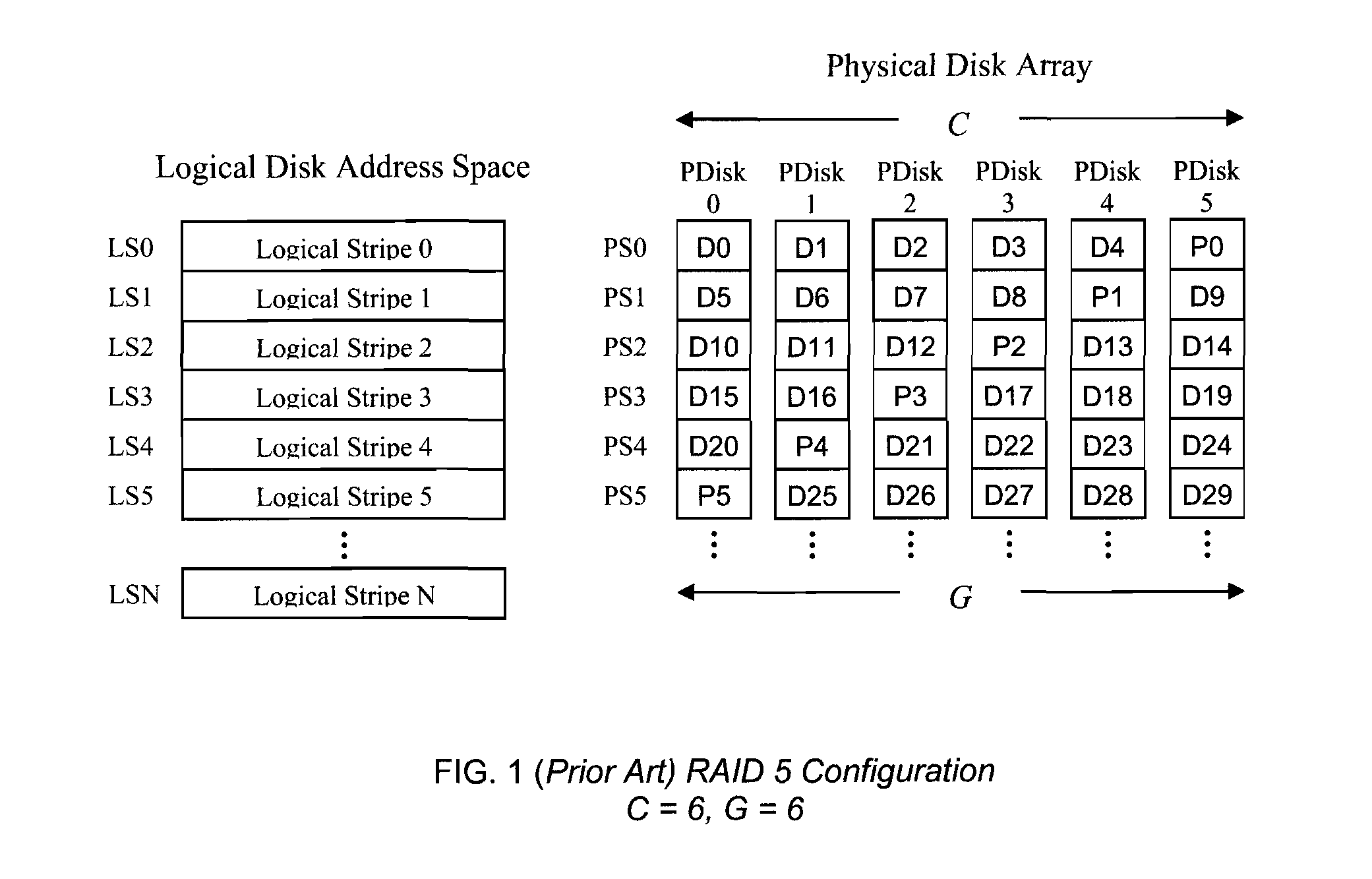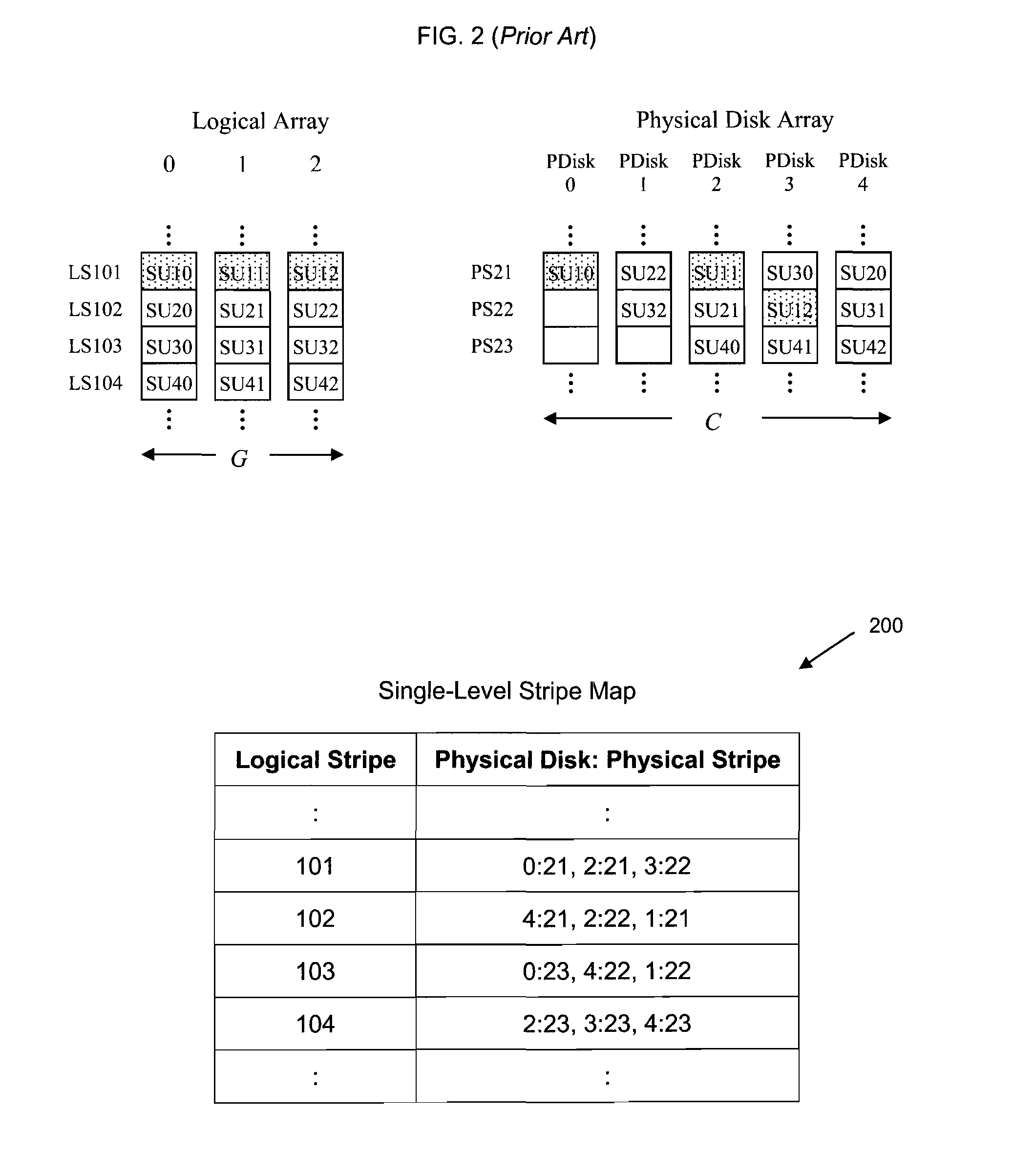Parity declustered storage device array with partition groups
a storage device array and partition group technology, applied in the field of storage systems, can solve the problems of configurations that do not support shadowing, single-level stripe map mechanisms that have the potential to be memory intensive for larger disk arrays,
- Summary
- Abstract
- Description
- Claims
- Application Information
AI Technical Summary
Benefits of technology
Problems solved by technology
Method used
Image
Examples
Embodiment Construction
[0025]Embodiments of this disclosure relate generally to storage systems, and more specifically, parity declustered storage device arrays, such as a parity declustered redundant disk array, with partition groups. Today, high performance, fault-tolerant data storage systems (preferably in continuous operation) are in demand. To provide this, a storage system may include a storage device array, such as a disk array. A disk array is a set of physical disks with redundancy to protect against data lost. Embodiments of this disclosure provide a data layout for a disk array based on a partition group lookup table. A data layout is an arrangement of data and redundant information (such as parity) that allows the array to reconstruct the contents of one or more failed disks, thereby providing a level of fault tolerance. A data layout is constructed by partitioning units of the disk array into a collection of non-overlapping stripes.
[0026]This disclosure describes a novel mechanism for partit...
PUM
 Login to View More
Login to View More Abstract
Description
Claims
Application Information
 Login to View More
Login to View More - R&D
- Intellectual Property
- Life Sciences
- Materials
- Tech Scout
- Unparalleled Data Quality
- Higher Quality Content
- 60% Fewer Hallucinations
Browse by: Latest US Patents, China's latest patents, Technical Efficacy Thesaurus, Application Domain, Technology Topic, Popular Technical Reports.
© 2025 PatSnap. All rights reserved.Legal|Privacy policy|Modern Slavery Act Transparency Statement|Sitemap|About US| Contact US: help@patsnap.com



